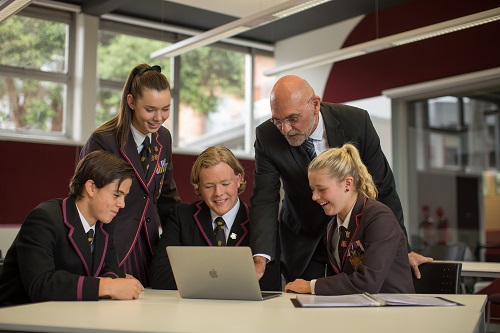
Haileybury started out in 1892 with just five staff and 17 students, but over the next 127 years, it would grow to become one of Australia’s leading private schools, spread across five campuses in Australia and one in Beijing, China.
While each campus might appear to be different, Haileybury makes sure that everything, from its culture to its teaching and learning framework, run uniformly across the entire network.
Today, Haileybury is Australia’s largest school, and it uses the full weight of its resources, both digital and human, to ensure that its staff and students are given the support that allows them to do their best.
And it certainly shows. The school's 2018 VCE achievements are impressive: 28% of students placed in the top 5% in Australia with an ATAR of 95 or above, 49% of girls placed in top 10% in Australia with an ATAR of 90 or above, and 40% of boys placed in the top 10% in Australia with an ATAR of 90 or above. Haileybury students also achieved 25 perfect study scores in 11 different subjects.
Building on excellence
Derek Scott has been Haileybury’s principal and CEO since 2007. He said his role is not unlike that of a traditional corporate CEO, overseeing a large organisation with multiple stakeholders.
“The principal/CEO role is about setting the education direction, developing the strategic plan, looking for new opportunities and supporting the school’s executive team on the day-to-day implementation,” Scott told The Educator, adding that this includes evaluating the key risks and opportunities for the school in the year ahead.
“Every opportunity has risk attached to it,” he said. “We are expecting our students to move out into a world that is fast-paced and where they will need to be enterprising and flexible in the world of work. We don’t want to tell students, ‘You must be enterprising’ – we want our institution to model this by looking for opportunities, taking a measured risk and being prepared to fail as well as succeed.”
Cultivating performance
Craig Glass, formerly senior vice-principal at Haileybury Melbourne and currently principal of Haileybury’s Rendall School in Darwin, said Haileybury’s strategies have focused on two major areas: teacher quality and student effort.
“Teacher variables are known to contribute approximately 30% of a student’s achievement,” Glass said.
“Teacher-quality-related initiatives that Haileybury has adopted include rigorous recruitment strategies, including all preferred candidates conducting demonstration lessons; adopting an innovative coaching program that provides confidential guidance to teachers; observation of lessons by both peers and leadership; and a thorough performance feedback process that focuses on teacher growth.”
Haileybury also has a clear teaching approach to its lower junior school literacy and numeracy program. Driven by the school’s deputy principal, John Fleming, this has ensured that the core skills of students are at the very highest level.
In addition, “to emphasise student effort, we have focused on students developing a growth mindset – that is, helping them believe that their achievement is a product of their effort rather than their ability,” Glass said. “This growth mindset encourages students to keep persisting when they experience failure rather than giving up, believing they have reached the limits of their ability.
“Alongside a growth mindset, we have introduced the concept of ‘grit’,” he adds. “The gritty student is one who is passionate about their work and is persistent in their efforts to succeed.”
The full version of this story appears in The Educator’s 5.1 magazine issue, which hit desks this week.


